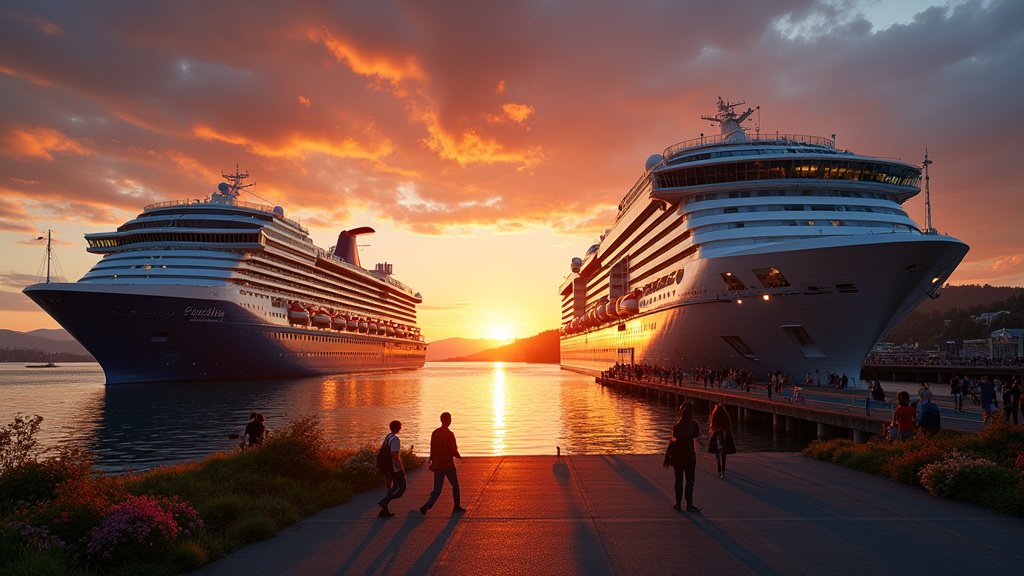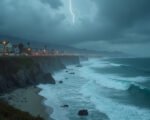Cruise Ship Surge Brings Economic Gains and Environmental Challenges to Vancouver Island
Vancouver Island, British Columbia, is experiencing a significant surge in cruise ship traffic, bringing both economic benefits and mounting environmental concerns. The influx of large vessels has injected new life into the local economy, particularly in the tourism sector, but the increased activity also casts a shadow, raising questions about the long-term sustainability of this growth.
Economic Boost Amidst Increased Traffic
The rise in cruise ship visits has undoubtedly provided an economic boost to the island. Businesses, from restaurants and shops to tour operators and transportation services, are seeing an increase in customers as thousands of tourists disembark and explore the region. This influx of visitors generates revenue and supports local employment, contributing to the overall prosperity of Vancouver Island communities. The vibrant atmosphere created by the cruise ship season is a welcome sight for many, revitalizing the downtown cores of cities like Victoria and fueling economic growth.
Environmental Concerns: Emissions and Waste
However, the economic advantages are accompanied by significant environmental challenges. A primary concern is the impact of cruise ships on air quality and greenhouse gas emissions. Environmental advocates are particularly vocal about the carbon footprint of these massive vessels. In 2023 alone, the cruise ships visiting Victoria emitted thousands of tonnes of carbon dioxide, contributing to climate change and potentially impacting air quality in the region. The sheer scale of these emissions necessitates serious consideration of the long-term effects on the environment.
Wastewater Discharge: A Threat to Marine Ecosystems
Beyond carbon emissions, the discharge of wastewater poses another significant threat. Cruise ships are known to release wastewater, including sewage, directly into the ocean. This practice can contaminate marine environments, harming delicate ecosystems and potentially posing risks to human health. The pollutants in wastewater can disrupt the natural balance of the ocean, impacting marine life and the overall health of the coastal waters.
Community Response and Proposed Solutions
The surge in cruise ship traffic has prompted a range of responses from community groups and local organizations. Many are expressing concern about the environmental impacts and calling for measures to mitigate the negative effects. Calls for limits on the number of ship visits are growing, especially until the installation of shore power is complete. Shore power would allow ships to plug into the local electrical grid while docked, eliminating the need to run their diesel engines and significantly reducing emissions and air pollution.
Visitor Dispersal Strategy: Managing Congestion
Recognizing the strain on popular tourist destinations, Destination Greater Victoria has introduced a visitor dispersal strategy. The aim is to alleviate congestion in high-traffic areas and encourage tourists to explore less-visited parts of the island. This strategy promotes a more sustainable approach to tourism, spreading the economic benefits more widely and reducing the environmental impact on specific locations.
Shore Power: A Promising Solution
A key solution being pursued is the installation of shore power facilities. The Greater Victoria Harbour Authority (GVHA) is planning to have shore power fully operational by 2028. This initiative is projected to eliminate approximately 50,000 tonnes of greenhouse gas emissions annually, a significant step towards reducing the environmental impact of cruise ship visits. The investment in shore power infrastructure demonstrates a commitment to balancing economic growth with environmental responsibility.
Navigating the Future: Balancing Growth and Sustainability
The situation on Vancouver Island highlights the complex challenges of balancing economic growth with environmental sustainability in the tourism industry. While the cruise ship boom provides substantial economic benefits, it is imperative to address the associated environmental concerns. The implementation of shore power, the visitor dispersal strategy, and ongoing dialogue between stakeholders are crucial to finding a sustainable path forward. The decisions made in the coming years will determine whether Vancouver Island can successfully navigate the future of cruise tourism, preserving both its economic vitality and its natural beauty.


















